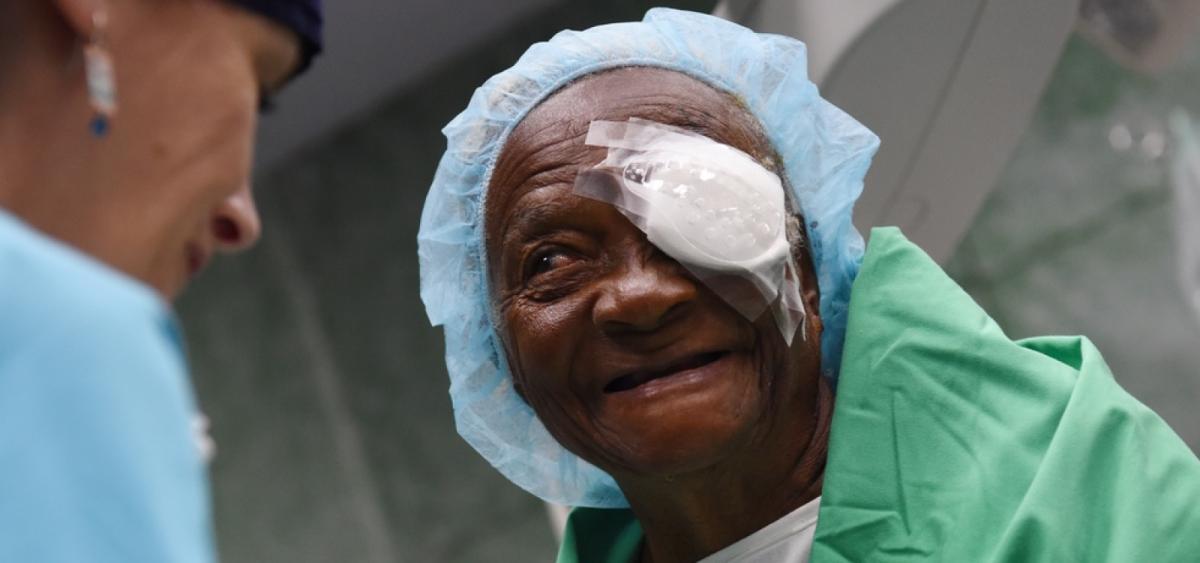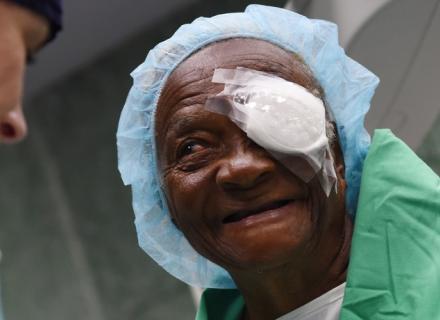

October 14th is World Sight Day
October 14, 2021
3 mins, 30 secs read


October 14, 2021
3 mins, 30 secs read
Your vision is increasingly blurry, glare can make driving at night difficult, and the colors of once-bright items now appear muted.1 Sometimes it feels like you’re peering through a dirty window.2
These symptoms of a cataract – a clouding of the eye’s lens that impairs vision – can arise so gradually that many patients are unaware that their vision is deteriorating. Other patients attribute the changes to fatigue or aging.1
The reality is that cataracts are the world’s leading cause of preventable blindness and the most common cause of vision loss in people over age 40.3, 4 There are more cases of cataracts than there are of glaucoma, diabetic retinopathy and age-related macular degeneration combined.4 More than 65 million people worldwide have cataracts, 5 including greater than 30 million Americans.6 An estimated 17 million of the 43 million people living with blindness today across the globe are cataract blind.7
Vision loss affects more than an individual’s eyes. Cataracts can have profound cognitive, psychological and social effects, diminishing an individual’s overall well-being and quality of life.8 Imagine not being able to do the activities that many of us take for granted every day, such as shopping for groceries, using a computer or seeing the faces of loved ones.1
Unless we act now to address the barriers to cataract awareness, detection and treatment, people across the globe will continue to surrender their sight – despite the fact that cataracts are highly treatable.9
Cataract surgery is among the most commonly performed, most successful and most cost-effective medical interventions, usually restoring patient sight.4, 9 Today, approximately four million cataract surgeries are performed annually in the U.S. and nearly 28 million are performed worldwide.4, 10
Nonetheless, early detection of cataracts is a major problem. For example, even before COVID-19, half of American adults skipped regular comprehensive eye exams, the only way to detect cataracts and other eye diseases.11 Reasons include lack of awareness about the need for routine eye exams and cost, including no or inadequate health insurance. Many health insurance plans don’t cover routine eye care.11, 12
The burden of cataracts is greater outside the U.S., where 99 percent of affected individuals live in underserved areas where ophthalmic surgery is rudimentary or unavailable. Such capacity and health equity issues, including a shortage of treatment facilities and qualified ophthalmic surgeons in many countries, mean that individuals with cataracts can spend much of their lives in the dark. This negatively affects their ability to provide for themselves and for their families.5
Ophthalmic surgeons who volunteer for medical missions supported by Alcon Cares each year relate stories of arriving at clinics in Central or South America, Africa or Asia to find 200 people waiting for care. Blinded by cataracts and led by sighted family members, many walk miles to secure a place in line.
Ending the cataract care crisis begins with making vision care a priority. Declaring eye health critical to the global health agenda, the World Health Organization this year adopted ambitious eye health targets, with member states committing to a 30 percent increase in effective coverage of cataract surgery by 2030.13 The United Nations followed suit by approving its first resolution on vision, calling on its 193 member nations to ensure access to eye care for their populations by 2030.14, 15
Accomplishing these goals requires that we empower surgeons to provide sustainable cataract patient care in underserved communities. Alcon’s Phaco Development Program has trained nearly 5,000 surgeons in Asia to increase capabilities, capacity and access to modern cataract surgery.7
Business leaders can play a role in recognizing eye health as part of overall good health throughout life. Let’s start by including vision coverage in health insurance plans so employees don’t have to pay out-of-pocket for routine eye care visits.16
Businesses and their foundations can also support non-profit humanitarian organizations dedicated to providing sustainable cataract treatment to those in need. These organizations offer low-cost eye care in communities where we live and work. They arrange for volunteer surgeons to travel to underserved parts of the world to perform cataract surgeries. And, importantly, they train and equip local eye care teams to perform phacoemulsification, or phaco, the standard of care in cataract surgery.7
The theme of World Sight Day this year is Love Your Eyes.17 By dismantling barriers to cataract awareness, detection and treatment, we can convey that message in terms everyone understands: Show your eyes some love today by undergoing a comprehensive eye exam. In other words, care for your eyes today so they don’t leave you in the dark tomorrow.
David Endicott, CEO, Alcon
# # #
David Endicott is the Chief Executive Officer of Alcon, the global leader in eye care, dedicated to helping people see brilliantly. Alcon was founded in Fort Worth, Texas, USA more than 70 years ago, and is today the largest eye care device company in the world.
Photo credit: Geoff Oliver Bugbee / Orbis